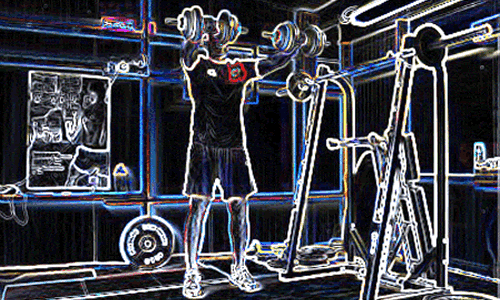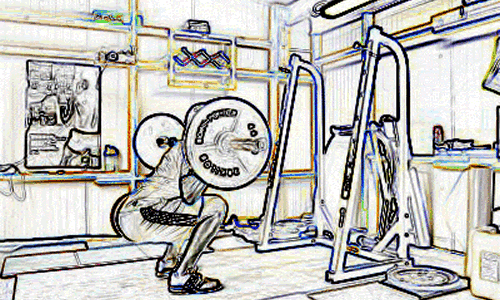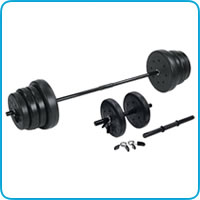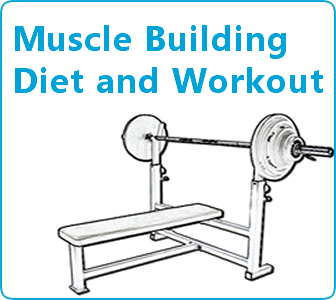So you’ve decided you want to pack on some muscle mass. You have no idea where to start, however. Fortunately, this guide is here for you, and it’s going to cover everything you need for a robust start.
First of all, here’s a bunch of simple truths about lifting that hold whatever it is you want to get out of your gym-going barbell-squatting career: Lifting weights is the safest sport there is. Lifting weights will make you not only stronger, but also healthier, PROVIDED you pay strict attention to the form of each exercise. Form first. Weight is secondary.
1. If you are doing an exercise for the first time, use an empty barbell and work with it until you are sure you know exactly what to do with it. Even then, add weight cautiously, only if you can perform the prescribed sets and reps without compromising form.
If you use too much weight to soon, you will either burn yourself out or injure yourself. Both decrease your training effectiveness.
2. You have to use a barbell if you want the most efficient way to get strong. Dumbbells are great. Bodyweight exercises are good. But you need the barbell if you want the best. Go to the gym or buy the equipment, but you need to use the barbell.
3. Touching the weights won’t make you look like a jacked body builder. Not in three months, not in three years. If you are a woman and you fear that lifting will make you look like those female power-lifters you saw on sports TV, look up Samantha Wright.
4. You’ll want to eat 1 to 2 grams of protein per kg of bodyweight depending on the quality of protein you are getting and the volume of work you are doing.
5. You’ll need 8 hours of sleep a night if you plan on getting stronger.
6. If you want to add weight, you need adequate protein intake and a caloric proficit. If you want to lose weight, you need adequate protein intake and a caloric deficit. How to calculate your caloric balance? Take the number of calories you expend per day, which is MBR (Basal Metabolic Rate; google it) + calories burned during exercise, and subtract calories consumed.
7. You are going to do compound, multi-joint, free-weight exercise. Among them are squat, deadlift, bench press, and standing press if you want to reach your goals.

8. You will consult your physician before embarking on a weight lifting journey. It’s safe, but there are always exceptions.
9. Consistency is the key. Skipping the workouts will rob you of your results, no matter how hard you work.
10. Cardio still has to be done on the off days.
Now that you know those simple truths, let me tell you about importance of priorities.
If you want to be a successful lifter, you want to know what your goals are. If you don’t have goals, you must formulate them. Setting a goal and moving towards it is how you get better. Working out without a specific goal in mind in beating around the bush.
If you don’t know what exactly is it that you want yourself, consult our article The Guide To Lifting Goals. It will help you straighten out your priorities. Which is important, because, you are going to pick your exercises, routines, and nutrition depending on your goals.
It’s not very important when you are just starting out. In fact, you’ll find that almost everything will have a big carryover to everything else. You are a beginner. You’ll be getting your strength back at this point, not gaining it. Later on, however, when you will start getting stronger than Mother Nature intended, you will want to be specific about it. It’s be specific or fail.
I feel that for a beginner, a whole body workout revolving around the basic lifts that are the squat, the deadlift, the bench press, and the press is ideal. Throw in some barbell rows, pull-ups, and maybe curls and ab work, and you are pretty much set for the first six months of your training.
A good example of such a workout is Starting Strength.
Starting Strength is very good for any beginner who wants to get stronger and bigger fast and without complicating things needlessly.
The whole workout incorporates few exercises, and has some variations. My favorite by far is Practical Programming. The whole workout looks something like this:
Monday
3×5 Squat
3×5 Bench press
3×12 Barbell rows
Wednesday
3×5 Squat
3×5 Press
1×5 Deadlifts
3×12 chin-ups
Friday
3×5 Squat
3×5 Bench Press
3×12 Barbell rows
If you feel you have enough gas in you after the end of each workout, feel free to add curls or abs at the end of the workouts.
You should be able to add weight after each workout on all exercises. Once this fails to occur for several weeks in a row, it’s time to graduate to the Texas Method program. It’s not recommended for beginners since you won’t be able to progress as fast with it. Once you’ve stalled on your Starting Strength program, however, you should move to the Texas Method.
Personally I feel that doing a full-body workout such as Starting Strength that incorporates the basic lifts is the best choice for a beginner. I advise you try it first. If for some reason it’s not working out for you (no pun intended), a wide plethora of split workouts are available, one example of which can be found



